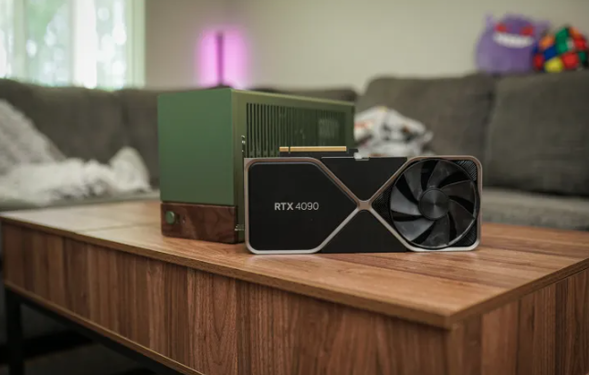
[Tinydeal Technology]In the next few months, the graphics card market will usher in an unprecedented major change. Nvidia, AMD, and Intel will release new generation products in a short period of time. The releases will be unprecedented and intense. Meanwhile, NVIDIA and AMD are making strategic adjustments. They are also accelerating the development of next-generation artificial intelligence technologies, such as FSR 4. This intense phase will undoubtedly shift the graphics card market competition, setting the stage for a transformative period.

This also means that the landscape of the GPU market will undergo comprehensive changes, with mixed results, but there is no doubt that we are entering a new era in the PC gaming industry. As graphics card market competition intensifies, each company is gearing up with innovations that could reshape the industry. Nvidia, AMD, and Intel’s new product releases will mark a turning point in gaming and computing performance.
GPU Overlord——NVIDIA
Although Nvidia has not confirmed the RTX 50 series GPUs, the market widely discusses its release plans.
Nvidia has traditionally released new graphics cards at the GPU Technology Conference (GTC). The CES exhibition, on the other hand, has mainly hosted special speeches and has not been used for launching new graphics cards. This year, however, Nvidia broke tradition. It launched new gaming GPUs, such as the RTX 4080 Super, at CES instead of at GTC. This shift may reflect GTC’s growing focus on AI. Nvidia seems to have chosen to release gaming graphics cards at broader technology shows like CES.
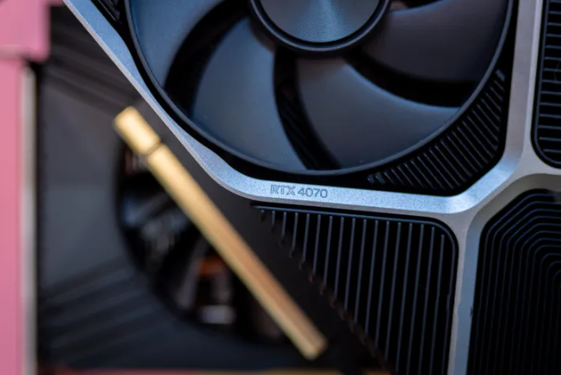
Although Nvidia has yet to confirm it, its active presence at CES and upcoming keynote suggest big news. The company is also deploying the Blackwell architecture for next-generation GPUs. Additionally, Nvidia has discontinued several RTX 40 series models. All these factors point to the RTX 50 series GPUs likely debuting early next year. Nvidia’s focus on pushing the envelope for performance will continue to define the graphics card market competition.
In addition to the release time, the graphics card specifications are also worthy of attention. Nvidia seems to have continued the trend of RTX 4090 and RTX 4080. The number of cores in the RTX 5080 will be significantly fewer than in the RTX 5090. As a result, the performance gap between the two generations will widen. The RTX 4090 replaced the Titan series and excelled in both gaming and professional workloads. The RTX 5090 is expected to continue this trend.
In addition, GDDR7 memory may become a new configuration for new generation graphics cards. GDDR7 has been known for more than a year and has recently begun mass production. Although there are rumors that Nvidia will adopt the next generation of memory, considering Nvidia’s leadership in graphics memory technology and the mass production of GDDR7, it is highly likely that Nvidia will adopt GDDR7.
Performance is uncertain, but Nvidia’s dominance in the high-end market will be more prominent. The real question is how far Nvidia wants to push performance, and how much consumers are willing to spend. In terms of GPU pricing, Nvidia has significantly pushed up prices with its past two generations of products. The RTX 50 series is expected to continue this trend and may even push prices higher.
Variable – AMD
AMD is entering a critical stage. AMD has officially confirmed that it will release the RDNA 4 series graphics cards (RX 8000 series) in early 2025. CEO Su Zifeng has proposed and emphasized this news multiple times, though he has not directly stated any cooperation with Nvidia at CES 2025. Released at the same time.
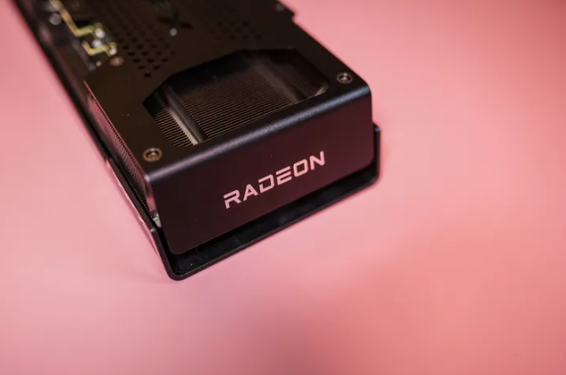
The specific release date is not a core issue. AMD executive Jack Hugh has pointed out that the company does not intend to compete with Nvidia for industry leadership. The RDNA 4 series will not focus on the ultra-high-end market. While AMD has been trying to catch up with Nvidia for years, the competition has been fierce in the entry-level and mid-range markets. However, Nvidia has always maintained its leadership in the flagship market.
AMD successfully competed with Nvidia’s RTX 3090 on price with the RX 6900 XT in the RDNA 2 series of graphics cards. However, its ray tracing performance was slightly inferior. Later, Nvidia launched the more powerful RTX 3090 Ti. In the new generation, Nvidia positioned its powerful flagship to dominate. As a result, the RX 7900 XTX now competes mainly with the RTX 4080 due to Nvidia’s higher pricing.
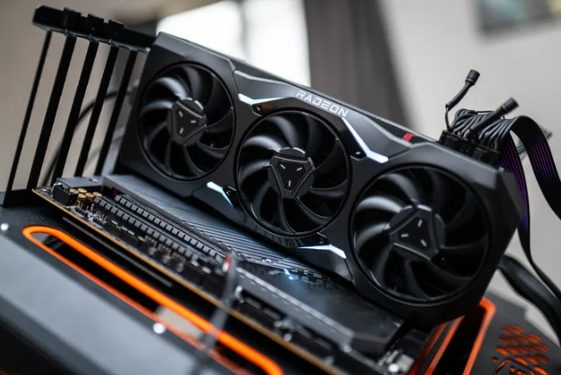
Although sales of the flagship products were limited, they set the tone for a new generation of graphics cards and demonstrated each brand’s market positioning. AMD may shift its strategic focus to lower-end product lines, as it did with the past successes of the RX 5700 XT and RX 580.
AMD is expected to regain some market share among high-performance consumer groups through FSR technology. Similar to NVIDIA’s leading DLSS technology, AMD is also developing its own super-resolution and frame generation technology. The next generation of FSR will rely on artificial intelligence. AMD expects the RDNA 4 GPU to integrate specific hardware to enhance AI performance.
The default winner – Intel
This year, Intel launched the Xe2 architecture, known as Battlemage technology, and applied it to the Lunar Lake series notebook CPUs. The company also introduced its internal structure in detail through a video. Intel intends to launch GPUs before AMD and Nvidia to avoid overlapping the media promotion cycles of these two giants. Although GPUs such as the Arc A770 and A750 perform well, Intel’s current market share is still far lower than AMD and Nvidia, so it needs to find a breakthrough to attract more attention.
In addition, ASRock has listed two graphics cards on Amazon in advance, adding a touch of surprise to Intel’s release. Both of these are Arc B580 graphics cards. Although the products have been removed from the shelves and their prices are unknown, some key information has surfaced. The low-end model of the ASRock Challenger series features an 8-pin power interface, suggesting that its power consumption won’t exceed 150W. It also comes with 12GB VRAM and a PCIe 5.0 x8 interface.
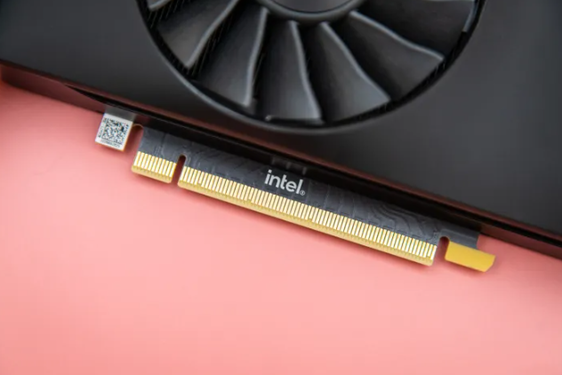
These details show that Intel plans to launch many models, with the B580 likely positioned at the low end of the market. In comparison, the A770 comes with dual 8-pin power connectors and 16GB VRAM, while the Arc A580 offers only 8GB VRAM. The PCIe 5.0 x8 interface is also eye-catching. It is fine if used with a PCIe 5.0 motherboard, but it may encounter bandwidth bottlenecks in PCIe 4.0 motherboard slots. However, these issues need to be further explored after the graphics card is launched.
As for the high-end models, Intel is clearly targeting AMD, not Nvidia, in an attempt to grab a piece of the market. The strategy focuses on cost-effectiveness, and the company appears to benchmark the performance of its flagship graphics card against the RTX 4070. However, no conclusive evidence has supported this statement yet.
Still, Intel doesn’t seem to be pursuing flagship-level performance, or even close to the performance levels of Nvidia’s RTX 5090. The strategy appears to be to grab market share at a lower price point than previous generation products while AMD and Nvidia focus on high-end products. This strategy began to bear fruit when Intel launched its first-generation desktop GPU.
In general, PC gamers will usher in a good situation with diversified new hardware choices. At the same time, market competition will intensify due to the release of new products from AMD, NVIDIA, and Intel. As the graphics card market competition heats up, gamers will be the ultimate beneficiaries, with more options and better performance to choose from.
For more information on the latest trends in the tech world, visit Tinydeal Blog and check out Tinydeals.net.




